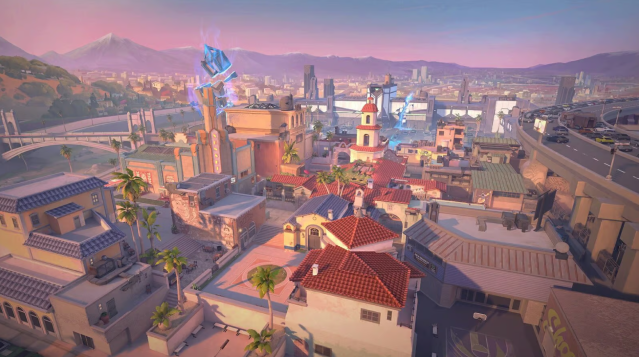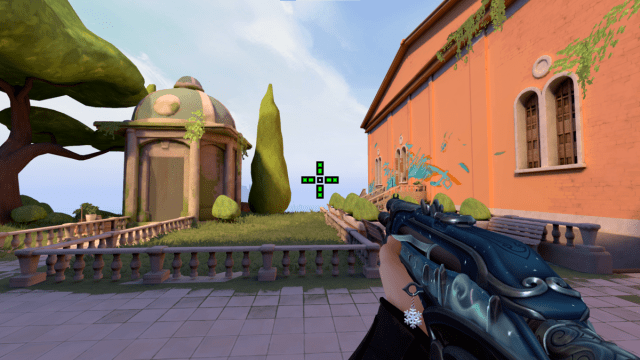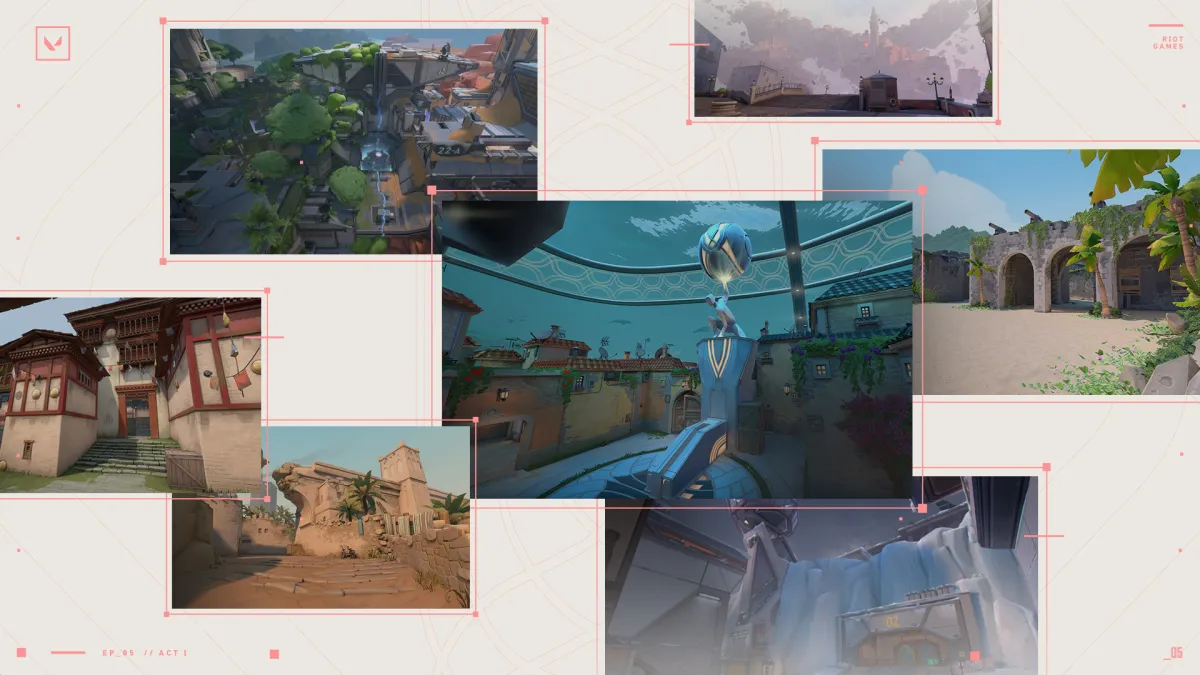VALORANT currently has 10 standard maps, and it can be daunting to learn the ins and outs of each one. But a map rotation that focuses on just seven maps at a time helps players feel less overwhelmed by not having to remember strategies for every map all at the same time.
The VALORANT map rotations change over time, keeping the game fresh. Here’s the current map pool and rotation for VALORANT.
What are the current maps in the VALORANT map pool rotation?

Here are the current maps in the VALORANT map pool rotation:
- Sunset
- Breeze
- Ascent
- Bind
- Split*
- Lotus
- Icebox
With the start of VALORANT Act Eight, Episode One, a revamped Icebox has returned, Lotus received a few adjustments, and Haven has been removed from the pool. After the conclusion of the main 2023 VCT season, Sunset, the game’s newest map, made its way into the competitive rotation.
Sunset is VALORANT’s latest addition, a Los Angeles cityscape highlighted by a golden glow. The map is fairly straightforward, with no new gimmicks being introduced but a hectic mid area. It has two sites and a large area in the middle of the map that is crucial for gaining control.
Icebox’s return to the active pool brings an end to the longest time spent out of the pool by any map, after it was removed in Patch 6.08 in April 2023.
*As of April 23, 2024, Split has been temporarily removed from the Competitive, Unrated, Premier, Swiftplay, and Spike Rush map pools. This is due to the existence of an exploit that allows certain agents to reach a high up, out of bounds angle. The exploit should be fixed by April 30, when the next act starts. Split has also been removed from the Premier playoffs for the current act.
There are no changes to the active map pool planned for Episode Eight, Act Three.
Breeze

This mysterious tropical island has been a thorn in the side of many players since its launch. Thankfully, Breeze recently got a massive rework in Episode Seven, Act Two that has eliminated many of the stubborn long sightlines that previously saw Chamber and Operator players running wild on the map. The rework still maintains the map’s feature characteristics but creates more opportunities for diverse playstyles and strategies.
One of the changes was the closing of A Halls, however that change was reverted and Halls was re-opened weeks later.
Ascent

Unlike Breeze, Ascent is a map that has relatively stayed the same since VALORANT’s launch. Its unique feature is the switch-activated doors that lead into each site, though Sunset now also features a similar door, making Ascent less unique. The two maps are actually very similar in both aesthetics and strategy, with fighting for Mid control being a constant theme in any Ascent game.
Bind

Bind eventually returned to the map pool later in Episode Six after a notable absence. The desert map’s signature element is its teleporters, which were reworked to offer a rejuvenated approach to the map. Playing closer angles is now a very viable strategy on Bind, with agents like Raze and even Harbor finding their voices here.
Split

Split has the distinction of being the first victim of the map rotation system. It was the first map to be rotated out, revamped, and returned to the active map pool. Split features tight layouts that support quick rotations, while also using differing elevations.
Split has been temporarily disabled due to an exploit. This is not the first time this has happened on Split.
Lotus

Lotus is another three-site map that built on the success of Haven, but Lotus has its own gimmicks as well. The map is known for its set of two rotating doors operated by buttons on either side, plus a destructible door that connects the B site and A-Main. The doors can be clunky to work around, and flanking is the name of the game in this lush forgotten city.
Following the launch of Episode Eight and Patch 8.0, received changes to all three sites, as well as A Main and A Link. Overall the map is a little more defender-friendly, giving the advantage three spike sites inherently benefitting the attacking side.
Icebox

Icebox is back in the active pool after some long time away. The B Main entrance has been opened up, but the pathing from Kitchen to the B site has been closed off. A window has been added to the central Tube, near where the Tube exits into Kitchen. The window spot should allow defenders to have more options when it comes to holding mid.
Why is there a map rotation in VALORANT?

VALORANT maintains its reputation as a live-service FPS title that continues to get tons of new content even over three years after its initial release. Riot hasn’t slacked off when it comes to releasing new agents, skins, and maps. Currently, VALORANT sees a new map added to the game about every six months, or every other Episode. The map rotation was only introduced in 2022 during the game’s fifth competitive Episode, once there were eight total standard maps. Team Deathmatch maps are not counted towards this total.
VALORANT maps design lead Joe Lansford explained back in June 2022 that after working with the esports team, surveying players, and talking with professional organizations, Riot will maintain a strict seven maps in the active pool.
If you’re having trouble learning the layouts of maps while being shot at by enemy players, you could always open up a custom match to learn the layouts by yourself. Knowing the twists and turns of a map is half the battle, after all!
Lansford continued by explaining how learning a new map in a tactical shooter can be one of the most challenging aspects of the game. Mastering a map is even harder, and having a “whole bunch of maps is a steep learning curve.” The team believes “seven is a nice sweet spot that offers both variety and mastery.” New players will have less to learn while diving into VALORANT, and existing players don’t need to learn a new map.







